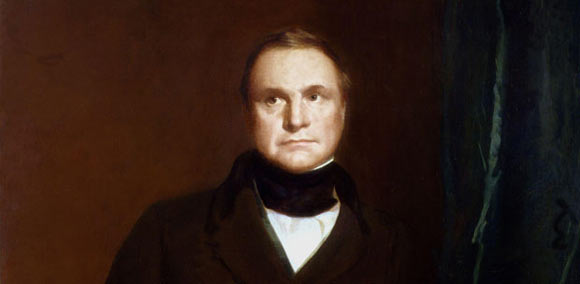Charles Babbage invented “Analytical Engine” and “Difference engine”
Charles Babbage was an English mathematician, engineer and inventor of the 19th century who is often referred to as “the father of the computer” for inventing the first mechanical computer. Babbage was born in London on 26 December 1791. His father was a partner in a banking firm so the family were well off. Although he did attend school for a while, his precarious health forced him to mostly study with private tutors. Ironically enough, his parents wanted him to have a light work load so he did not tax himself much and would recover faster. However, Babbage soon proved himself to be an exceptional student and got accepted to Cambridge.
He enrolled at Trinity College, Cambridge in 1810 where he initially found the syllabus to be below par, as he had already studied much of the contemporary mathematics syllabus in his private studies. In 1812, he founded an “Analytical Society” at Cambridge along with some of his friends and became a member of several other societies. Babbage was the top mathematics student in his batch but he did not graduate with honors. Instead, in 1814, he received a degree without even sitting for the examination. The reasons for this unusual arrangement are not known.
The idea for developing a computer or “calculating machine” as it was called then occurred to Babbage around the time he was in Cambridge. He regretted the high error rate in manual calculations and as he was already of a very methodical frame of mind and adept at using logarithmic tables, he conceived the idea of a machine that would mechanically and precisely perform tedious calculations. His ideas were inspired by the work of earlier scientists such as Schickard, Pascal and Leibniz.
In 1822, he presented the idea of a “Difference Engine” to the Royal Astronomical Society. This was to be a machine that would perform calculations relating to polynomial equations. After attaining the society’s approval, Babbage received £1500 for construction. It was a painstaking effort to have each part of the machine custom made, so Babbage hired Joseph Clement to supervise the manufacturing process, while he designed the parts and tools, and toured the industry to update himself with the manufacturing standards of the time. The project eventually amounted to nothing due to differences of opinion with Clement and the difficulty of obtaining further funding from the government. The total amount of money invested was £23,000 including £6000 invested by Babbage himself.
In 1828, he was appointed as the Lucasian Professor of Mathematics at Cambridge, a post which he served until 1839. He was also elected as a Foreign Honorary Member of the American Academy of Arts and Sciences in 1832. During his time at Cambridge, he wrote three books but did not give a single lecture; a fact that was much derided by his colleagues. His next foray into computing was the “Analytical Engine” – an improved calculating engine that could perform any type of calculations. It consisted of two parts; the mill that is the modern day equivalent of a CPU, and the store, that is the memory of the computer. By 1835, the design phase was complete and Babbage and his assistants had done hundreds of drawings and made thousands of notation sheets. The finished machine would have been 15 feet tall. Unfortunately, this project too was left unfinished.
Babbage did successfully manufacture a second difference engine, which had 8000 movable parts – a third of the number of parts utilized in the previous machines. It was a spectacular piece of engineering given the technology available at the time and effectively became the first mechanical computer in the world. Other than this, he also made significant contributions to railways, and was instrumental in establishing the modern day postal system. Babbage was presented with a Gold Medal by the Royal Astronomical Society and also offered a knighthood and baronetcy, both of which he refused. He was married to Georgiana Whitmore and had 8 children, of whom only 3 survived. He died on 18 October 1871 at the age of 79.
